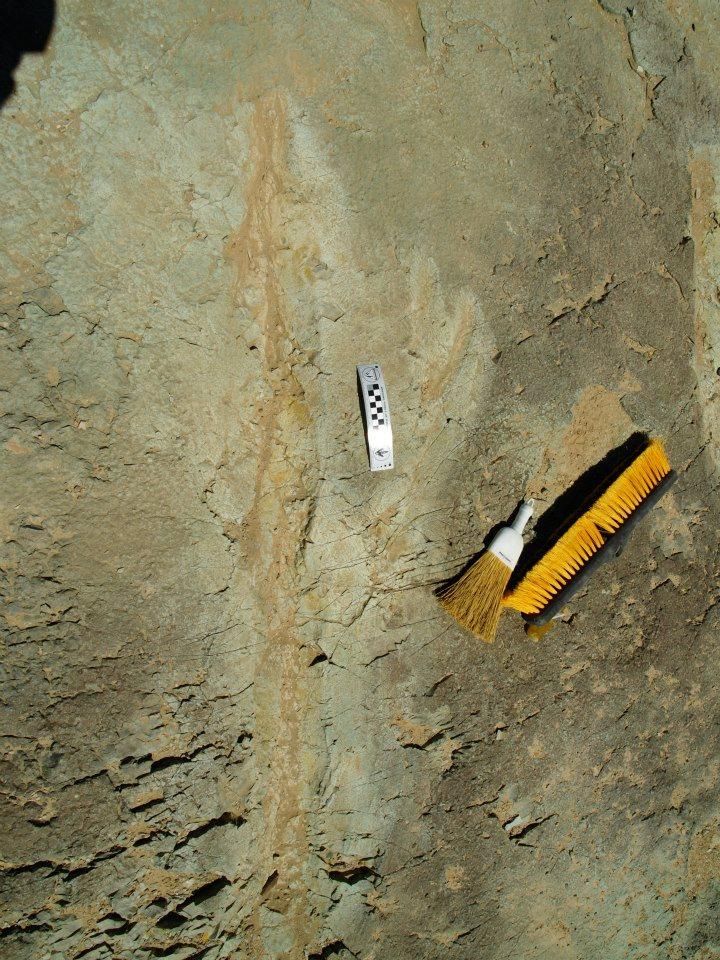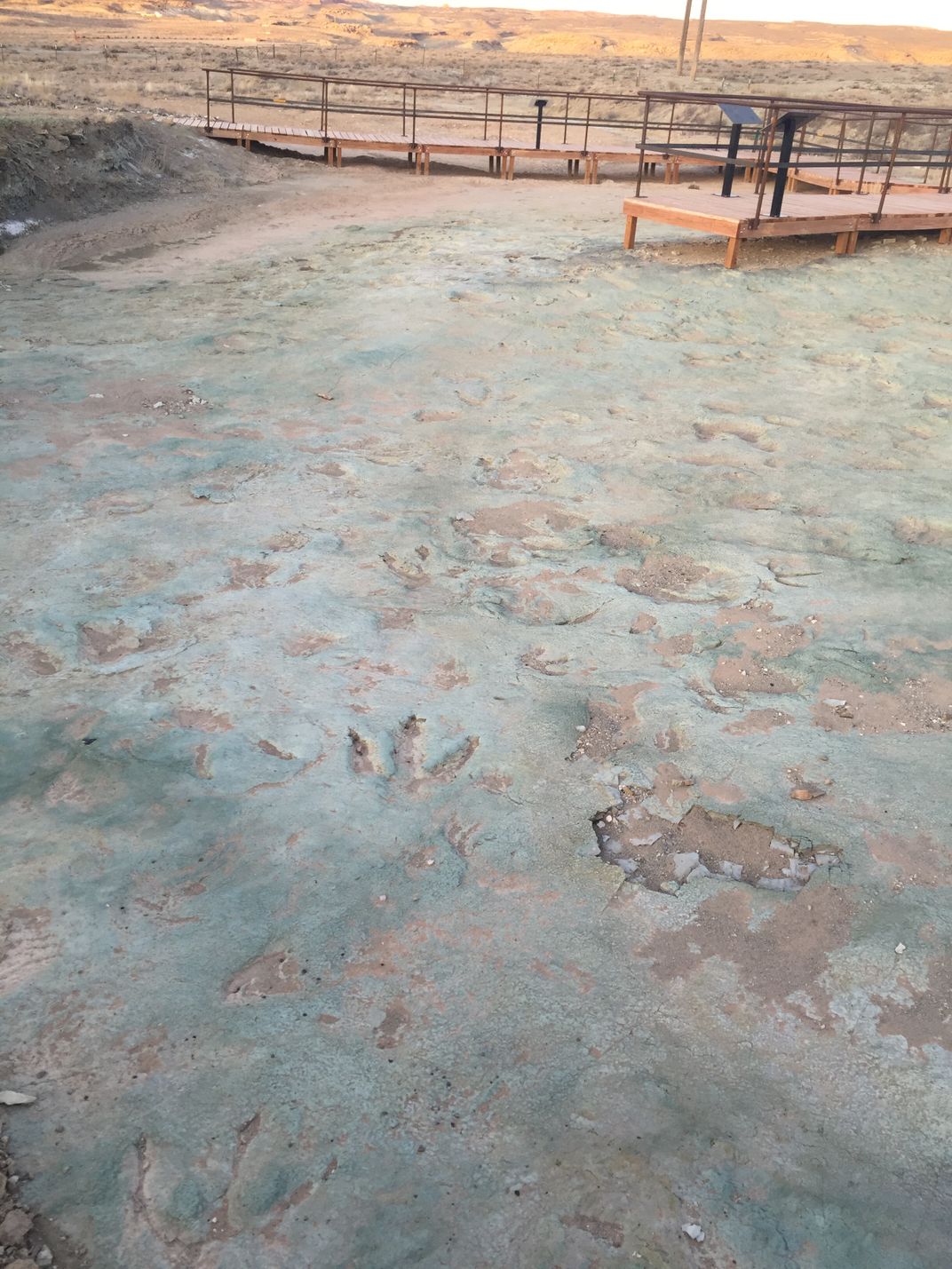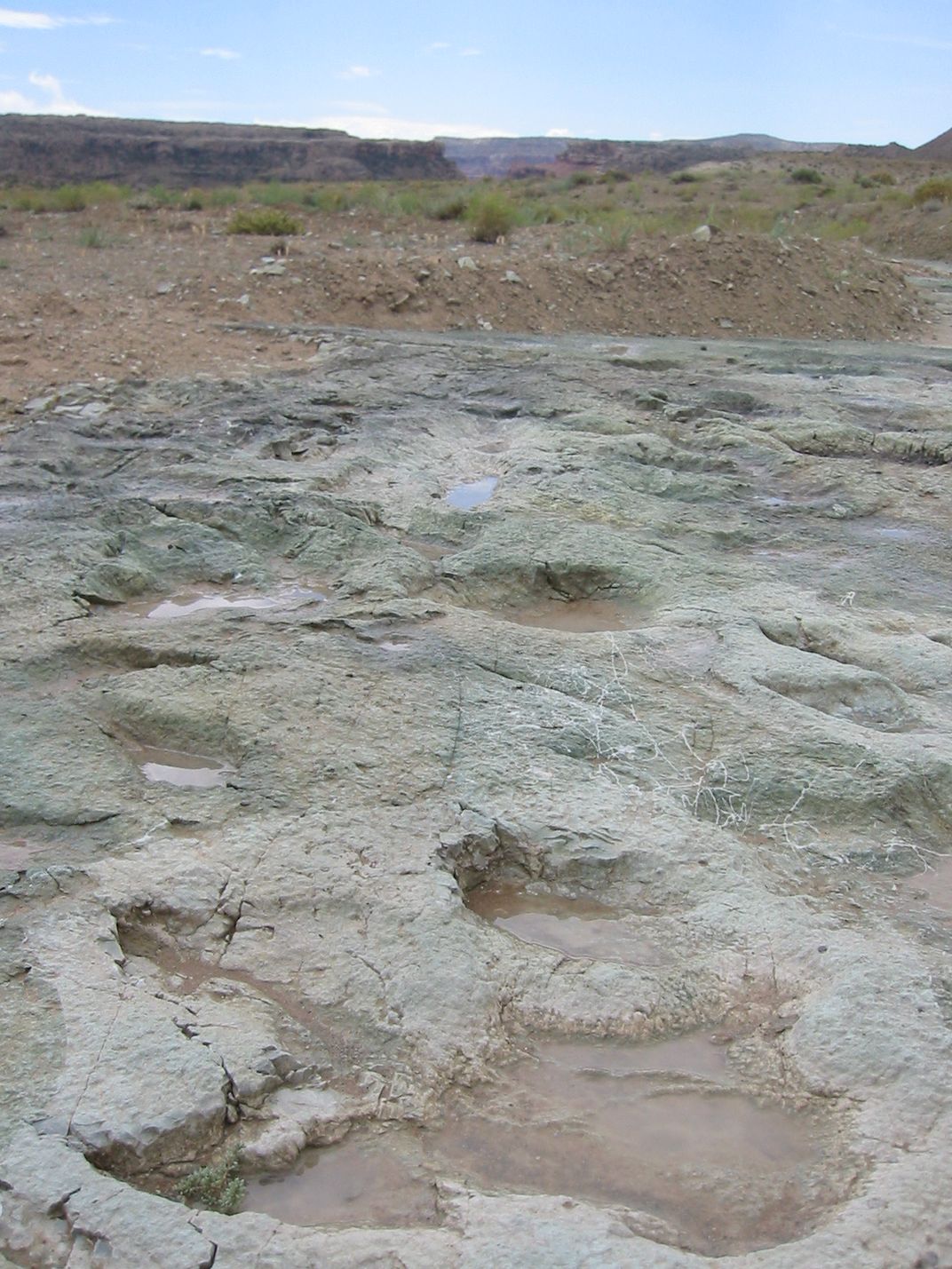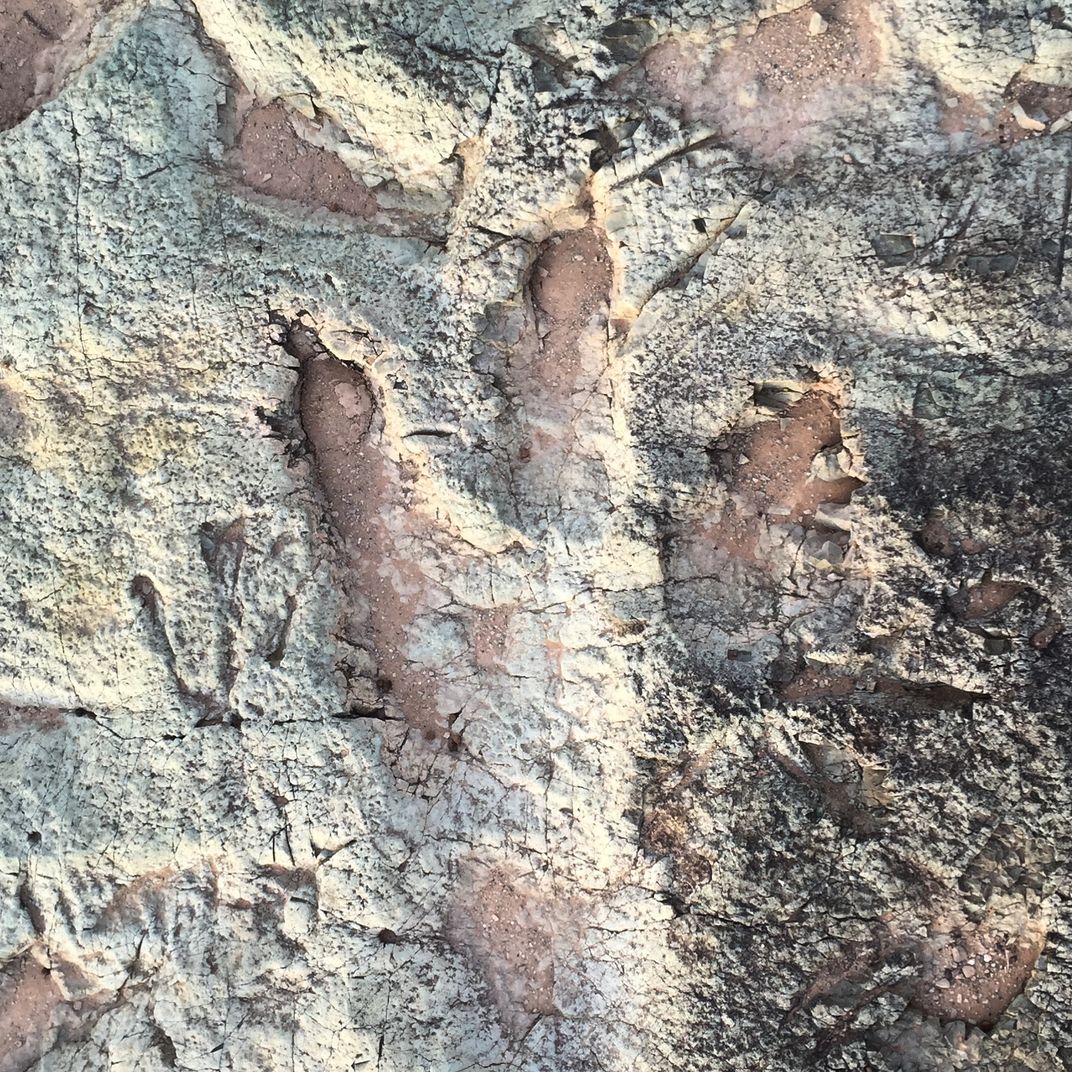Paleontologists Unveil Dinosaur Stomping Ground in Utah
Visitors can view ghostly footprints that record prehistoric steps in pale blue stone
:focal(247x857:248x858)/https://tf-cmsv2-smithsonianmag-media.s3.amazonaws.com/filer/7f/e3/7fe3d066-eb2f-4f65-af11-dbcb094dacad/mcdtpaleoscape-medianodosaur.jpg)
Hundreds of millions of years ago, long before the town of Moab existed, dinosaurs roamed eastern Utah. Tracks tell their tales. Prehistoric footprints by the hundreds are preserved in the stone surrounding this former uranium boom town, a silent record of the three major chapters, or periods, of the Age of Dinosaurs. Some of these footprints are hidden away in the backcountry, known only to experts. But others nearly run through the city, exposed along the roads leading to and through the desert community. It was in one of these more accessible places, along U.S. Route 191, that a chance discovery recently led paleontologists to one of the most spectacular dinosaur stomping grounds ever found in the state.
Officially named the Mill Canyon Dinosaur Tracks in a public unveiling earlier this month, the fossil bonanza was hiding in plain sight. The 112-million-year-old trackways sit beneath powerlines that run toward Moab and are a short troll from a parking lot that regularly serves as a temporary home for RV campers. But the tracks remained unnoticed until 2009, says Bureau of Land Management paleontologist ReBecca Hunt-Foster, when a local Moabite, driving along an old jeep track that ran over the spot, noticed a few exposed tracks.
That first find was only a sampling. As paleontologists quickly exposed and examined the site, they found prehistoric traces left by an entire array of Cretaceous animals. Pothole-shaped depressions made by a long-necked dinosaur similar to Camarasaurus cross over and muddle the three-toed imprints previously left by a large carnivorous dinosaur. Nearby are what seem to be the pockmarks of the plodding steps of an armored dinosaur, while just a stone’s throw away are the distinctive two-toed tracks of a large raptor. There are at least six types of dinosaur tracks here, Hunt-Foster says, in addition to other traces, such as a furrow left by a crocodile sliding into water.
All these footprints, scrapes and other traces are from a slice of time that is still mysterious. The Mill Canyon tracks are preserved in rocks known as the Cedar Mountain Formation, layers laid down after Jurassic classics such as Allosaurus and Stegosaurus lived, but long before the reign of Tyrannosaurus and Triceratops. “The [tracks] site is located in the Ruby Ranch Member of the Cedar Mountain Formation,” Hunt-Foster says, and this is significant because fewer skeletal fossils have been found in this part of the formation than in the younger and older layers above or below. This means that the tracks offer an unparalleled opportunity to see what dinosaurs were stomping around alongside each other during a narrow window in time.
This was no dinosaur dance floor, though. Back when raptors stalked and ankylosaurs shuffled around, Hunt-Foster says, “the area was a large mudflat with a shallow lake” with a coating of algae blanketing the mud. And while we’ll never know how the dinosaurs felt about the sensation of algae and mud squishing between their toes, this combination of factors provided the perfect mix of circumstances to preserve tracks.
The algae, in particular, were critical. “The algal mat that covered the mud helped to preserve the detail of the tracks when a finer-grained … sediment washed over the mudflat,” Hunt-Foster says, burying the site. This preserved the imprints in great detail, she adds, noting that “the algal covering helped to keep the finer details of the tracks, such as the impact rims made when the animals stepped into the soft mud, along with foot pad impressions, from being eroded away or damaged during this covering event.” The effect is ghostly, prehistoric footprints recording ancient steps in pale blue stone.
Working with other local organizations, the Bureau of Land Management recently erected a boardwalk over the tracksite and interpretive signs to help visitors understand what they are seeing. There’s no hiking required here—just a stroll down from the nearby parking lot. But accessibility brings its own challenges. “Many of the tracks are breaking down from having people walk on the surface,” Hunt-Foster says. The public lands office worries that some visitors might try to brush off the tracks or even make plaster casts that damage the footprints, which people have done at other sites. Therefore, local BLM offices are emphasizing a “Respect and Protect” program to help stop such vandalism, asking visitors to stay on designated trails and leave these ancient monuments as they find them.
Thanks to the researchers and volunteers who have cared for the site, though, more than 200 tracks lay exposed to the sun for the first time in 112 million years. They are not a static monument to life gone by. Each step, each trackway, is fossilized behavior, delicately recording dinosaurs as they ran, plodded and strutted through life. Standing on the boardwalk surrounding the exposed stone, all you have to do is fill in those steps with your imagination.
/https://tf-cmsv2-smithsonianmag-media.s3.amazonaws.com/accounts/headshot/RileyBlack.png)




/https://tf-cmsv2-smithsonianmag-media.s3.amazonaws.com/accounts/headshot/RileyBlack.png)